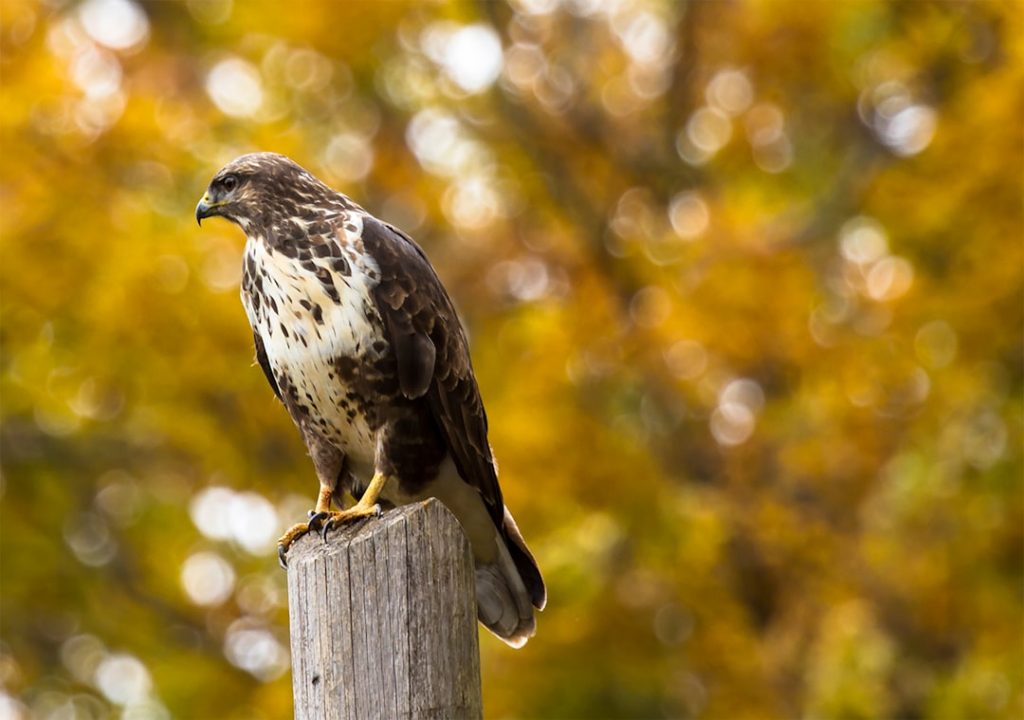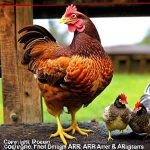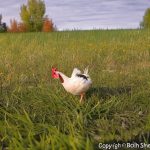Hawks are natural predators that pose a significant threat to chickens. These birds of prey have keen eyesight and are skilled hunters, making them a formidable danger to free-ranging chickens. Hawks are attracted to chickens as a food source due to their size and lack of natural defenses.
The movements and sounds of chickens can attract hawks from a distance, increasing their vulnerability to attacks. Hawks are opportunistic hunters, taking advantage of any chance to catch their prey, including unattended or unprotected chickens. The expansion of urban and suburban areas into natural habitats has led to an increase in human-wildlife interactions, including hawk attacks on backyard chickens.
It is essential for chicken owners to understand the threat that hawks pose and take proactive measures to protect their flock. By comprehending the behavior and motivations of hawks, chicken owners can implement effective strategies to deter these predators and ensure the safety of their chickens. Hawks not only threaten the safety of chickens but also impact the well-being of chicken owners.
The loss of chickens due to hawk attacks can be emotionally distressing and financially burdensome. Additionally, the presence of hawks near a chicken coop can create stress and anxiety for both the chickens and their owners. It is crucial for chicken owners to be aware of the potential threat posed by hawks and take steps to mitigate the risk of attacks.
Understanding hawk behavior and motivations allows chicken owners to implement effective strategies to deter these predators and maintain the safety and security of their flock.
Table of Contents
- 1 Creating a Secure Chicken Coop
- 2 Using Visual Deterrents
- 3 Implementing Auditory Deterrents
- 4 Utilizing Physical Barriers
- 5 Employing Natural Predators
- 6 Seeking Professional Help
- 7 FAQs
- 7.1 What are some natural ways to keep hawks away from my chickens?
- 7.2 Are there any commercial products available to deter hawks from attacking my chickens?
- 7.3 What should I do if I spot a hawk near my chicken coop?
- 7.4 Are there any legal methods to deter hawks from attacking my chickens?
- 7.5 What are some signs that a hawk has been targeting my chickens?
Key Takeaways
- Hawks target chickens because they are easy prey and provide a good source of food.
- Creating a secure chicken coop is essential to protect chickens from hawk attacks.
- Visual deterrents such as scarecrows and reflective objects can help deter hawks from targeting chickens.
- Auditory deterrents like wind chimes and predator calls can also help keep hawks away from chicken coops.
- Physical barriers such as netting and fencing can be effective in preventing hawks from accessing chickens.
Creating a Secure Chicken Coop
Designing a Secure Chicken Coop
A well-designed chicken coop is one of the most effective ways to protect chickens from hawk attacks. The coop should be sturdy and predator-proof, with secure latches and locks on doors and windows to prevent unauthorized entry. Additionally, the coop should be equipped with a secure roof to prevent hawks from swooping down and snatching chickens from above.
Providing Shelter and Hiding Spots
It is essential to provide adequate shelter and hiding spots within the coop to allow chickens to seek refuge in the event of a hawk attack. This can include nesting boxes, perches, and other structures that provide cover and protection for the chickens. By creating a secure chicken coop, chicken owners can significantly reduce the risk of hawk attacks and provide their flock with a safe and protected environment.
Additional Measures to Deter Hawks
In addition to creating a secure coop, chicken owners can also implement other measures to protect their flock from hawk attacks. This can include using visual deterrents such as scarecrows or reflective tape to deter hawks from approaching the coop. By combining these strategies with a secure chicken coop, chicken owners can create a comprehensive defense system that minimizes the risk of hawk attacks and keeps their flock safe and secure.
Using Visual Deterrents
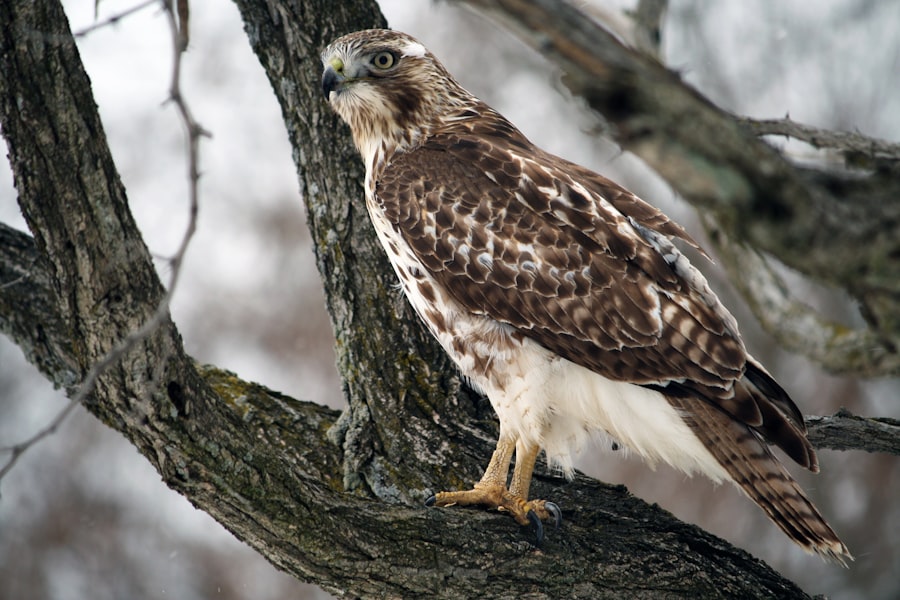
Visual deterrents are an effective way to deter hawks from approaching a chicken coop. These deterrents work by creating visual disturbances that make hawks feel uncomfortable or threatened, causing them to avoid the area. One common visual deterrent is the use of scarecrows, which can be placed near the coop to create the illusion of human presence and deter hawks from approaching.
Additionally, reflective tape or shiny objects can be hung around the coop to create flashes of light that disorient and deter hawks. Another visual deterrent that can be effective against hawks is the use of predator decoys, such as plastic owls or hawks. These decoys create the illusion of a larger predator in the area, causing hawks to avoid the vicinity of the coop.
By using visual deterrents, chicken owners can create a hostile environment for hawks and minimize the risk of attacks on their flock. In addition to using visual deterrents, chicken owners can also implement auditory deterrents to further deter hawks from approaching the coop. These deterrents work by creating loud noises or sounds that are unpleasant or threatening to hawks, causing them to avoid the area.
By combining visual and auditory deterrents, chicken owners can create a comprehensive defense system that effectively deters hawks from approaching their flock.
Implementing Auditory Deterrents
Auditory deterrents are an effective way to deter hawks from approaching a chicken coop. These deterrents work by creating loud noises or sounds that are unpleasant or threatening to hawks, causing them to avoid the area. One common auditory deterrent is the use of noise-making devices such as air horns or whistles that can be activated when hawks are spotted near the coop.
These loud noises create a hostile environment for hawks and discourage them from approaching the area. Another auditory deterrent that can be effective against hawks is the use of recorded predator calls or distress calls of other birds. These calls mimic the sounds of natural predators or distressed animals, causing hawks to perceive the area as unsafe and avoid it.
By implementing auditory deterrents, chicken owners can create a hostile environment for hawks and minimize the risk of attacks on their flock. In addition to using auditory deterrents, chicken owners can also combine these strategies with visual deterrents such as scarecrows or reflective tape to create a comprehensive defense system that effectively deters hawks from approaching their flock.
Utilizing Physical Barriers
Physical barriers are an effective way to prevent hawk attacks on chickens by creating a physical barrier between the birds of prey and the flock. One common physical barrier is the use of netting or wire mesh that can be installed over the top of the chicken coop to prevent hawks from swooping down and snatching chickens from above. Additionally, fencing around the perimeter of the coop can create a barrier that deters hawks from approaching the area.
Another physical barrier that can be effective against hawks is the use of covered runs or enclosures that provide additional protection for chickens. These enclosed areas provide a safe space for chickens to roam freely while being protected from potential hawk attacks. By utilizing physical barriers, chicken owners can create a secure environment for their flock and minimize the risk of hawk attacks.
In addition to using physical barriers, chicken owners can also implement other measures such as providing adequate shelter and hiding spots within the coop to allow chickens to seek refuge in the event of a hawk attack. By combining these strategies with physical barriers, chicken owners can create a comprehensive defense system that effectively deters hawks from approaching their flock.
Employing Natural Predators
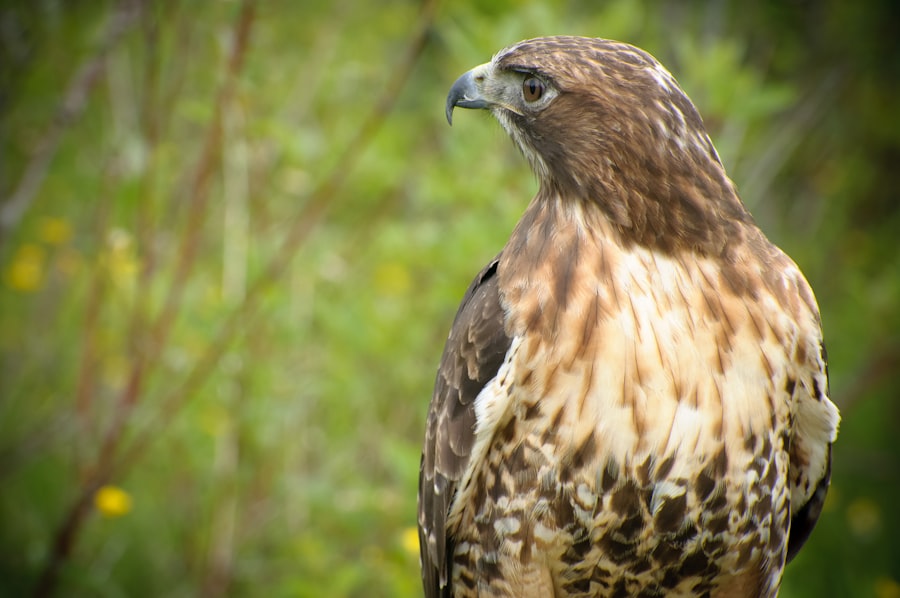
Natural Predators as a Deterrent
The presence of natural predators creates a hostile environment for hawks, discouraging them from approaching the coop. This is because hawks are less likely to attack when they sense the presence of a potential competitor or threat.
Introducing Larger Birds to the Flock
Another approach is to introduce larger birds, such as geese or turkeys, into the flock. These birds are more intimidating to hawks and can help protect smaller chickens from potential attacks.
Combining Strategies for Comprehensive Defense
In addition to employing natural predators, chicken owners can also implement other measures to create a comprehensive defense system. Providing adequate shelter and hiding spots within the coop allows chickens to seek refuge in the event of a hawk attack. By combining these strategies, chicken owners can create a secure environment for their flock and minimize the risk of hawk attacks.
Seeking Professional Help
In some cases, despite implementing various deterrents and protective measures, hawk attacks on chickens may persist. In such situations, it may be necessary for chicken owners to seek professional help from wildlife experts or pest control professionals who specialize in bird deterrence. These professionals have the knowledge and experience to assess the situation and recommend effective strategies for deterring hawks from targeting chickens.
Professional help may involve installing advanced deterrent systems such as bird netting or bird spikes around the coop to prevent hawk attacks. Additionally, wildlife experts may provide advice on habitat modification or other long-term solutions for minimizing human-wildlife conflicts in urban or suburban areas. Furthermore, seeking professional help can also involve obtaining permits for non-lethal methods of bird control if necessary.
Wildlife experts can assist in navigating legal requirements and regulations related to deterring hawks while ensuring compliance with wildlife conservation laws. In conclusion, protecting chickens from hawk attacks requires an understanding of the threat posed by these predators and implementing effective strategies for deterrence. By creating a secure chicken coop, using visual and auditory deterrents, utilizing physical barriers, employing natural predators, and seeking professional help when necessary, chicken owners can minimize the risk of hawk attacks and provide their flock with a safe and protected environment.
If you’re looking for ways to keep hawks away from your chickens, you may also be interested in learning about what vegetables quails eat. Check out this article on what vegetables do quails eat to ensure you’re providing the best diet for your quail.
FAQs
What are some natural ways to keep hawks away from my chickens?
Some natural ways to keep hawks away from your chickens include providing overhead cover such as trees or netting, using scare tactics like reflective objects or noise makers, and keeping a rooster to alert the flock of danger.
Are there any commercial products available to deter hawks from attacking my chickens?
Yes, there are commercial products available such as hawk decoys, predator eye balloons, and electronic deterrents that emit sounds to scare away hawks.
What should I do if I spot a hawk near my chicken coop?
If you spot a hawk near your chicken coop, it’s important to take immediate action to protect your flock. You can use scare tactics, such as making loud noises or waving your arms, to try to scare the hawk away. It’s also a good idea to provide overhead cover for your chickens to hide under.
Are there any legal methods to deter hawks from attacking my chickens?
In the United States, hawks are protected under the Migratory Bird Treaty Act, so it is illegal to harm them. However, there are legal methods to deter hawks from attacking your chickens, such as using scare tactics and providing overhead cover for your flock.
What are some signs that a hawk has been targeting my chickens?
Some signs that a hawk has been targeting your chickens include finding feathers or remains of a chicken in the area, seeing a hawk circling or perching near your coop, or noticing that your chickens are acting scared or stressed.
Meet Walter, the feathered-friend fanatic of Florida! Nestled in the sunshine state, Walter struts through life with his feathered companions, clucking his way to happiness. With a coop that’s fancier than a five-star hotel, he’s the Don Juan of the chicken world. When he’s not teaching his hens to do the cha-cha, you’ll find him in a heated debate with his prized rooster, Sir Clucks-a-Lot. Walter’s poultry passion is no yolk; he’s the sunny-side-up guy you never knew you needed in your flock of friends!

